

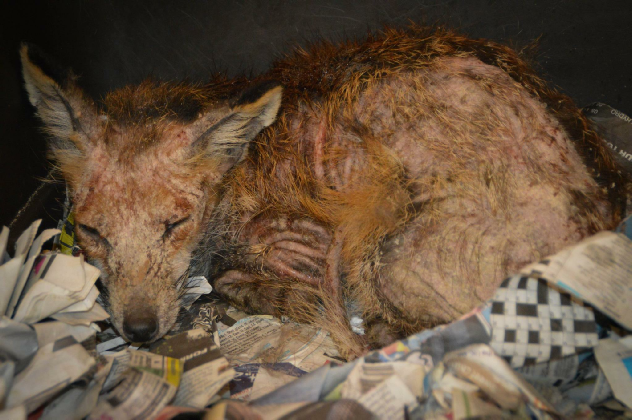 If the mite infestation in addition to the secondary bacterial infections and the dehydration wasn’t bad enough, many foxes will also suffer some degree of conjunctivitis. In four months an untreated fox is likely to be dead. Within our study of Sarcoptic Mange we have taken many blood tests and many skin samples from foxes suffering this condition. We have spoken to over 100 householders whose dogs have contracted Sarcoptic Mange and our findings are as follows: Please note these are just our opinion based on the findings. We have spoken to many people within the veterinary field and they think just maybe we have a case that needs answering. We are often asked a series of questions regarding our treatment methods for mange, below is a summary of these issues which will help you better understand the way that we approach the problem.
If the mite infestation in addition to the secondary bacterial infections and the dehydration wasn’t bad enough, many foxes will also suffer some degree of conjunctivitis. In four months an untreated fox is likely to be dead. Within our study of Sarcoptic Mange we have taken many blood tests and many skin samples from foxes suffering this condition. We have spoken to over 100 householders whose dogs have contracted Sarcoptic Mange and our findings are as follows: Please note these are just our opinion based on the findings. We have spoken to many people within the veterinary field and they think just maybe we have a case that needs answering. We are often asked a series of questions regarding our treatment methods for mange, below is a summary of these issues which will help you better understand the way that we approach the problem.
Mange Info 2: Just why is it that the homeopathic remedy that we send out works in 99% of all cases, considering that the remedy doesn’t kill the mange mite?
Why is it that Sarcoptic Mange doesn’t pass from one fox to another as easily as we are led to believe?
Why is it that a fox suffering badly from Sarcoptic Mange can actually be killed rather than cured with conventional medicine?
Why does veterinary treatment often either not prevent re-
Just why is it that the homeopathic remedy that we send out works in 99% of all cases, considering that the remedy doesn’t kill the mange mite?
Why is it that Sarcoptic Mange doesn’t pass from one fox to another as easily as we are led to believe?
Why is it that a fox suffering badly from Sarcoptic Mange can actually be killed rather than cured with conventional medicine?
Why does veterinary treatment often either not prevent re-
Firstly, to discover how the homeopathic remedy (Arsenicum alb & Sulphur 30c) we send out works we need to know what it actually does to the animal. Well the answer lays in the fact that it treats the skin. With this in mind it’s obviously a fair assumption to believe that the skin must have originally been in poor condition to allow the mange mite to successfully breed. With the results of the skin scrapes and blood tests we feel that one of the main reasons that foxes suffer from mange is because of the individual diet of the animal -
A country fox eating a rabbit will not only eat the rabbit, but also what the rabbit has eaten as well. The meat will not only be fresh but also the fox will be taking essential vitamins and minerals by eating the liver, heart etc. In addition the extra vitamins and roughage will come in the form of what the rabbit has also eaten. In comparison the town fox’s diet consists greatly of food hand outs and items scavenged from well known take away outfits. Whilst the town foxes may be eating the same amount of food as that of the country fox the difference in the quality of food is great.
Within our research with blood and skin scrapings we have found many things in common and that is that the secondary infections setting in as a result of mange are usually all vitamin deficiency related.
We feel the homeopathic remedy improves the skin condition making it virtually impossible for the mange mites to continue their life cycle.
We also feel that stress has a major effect on individual animals and this is why one fox could get Sarcoptic mange and its mate remains mange-
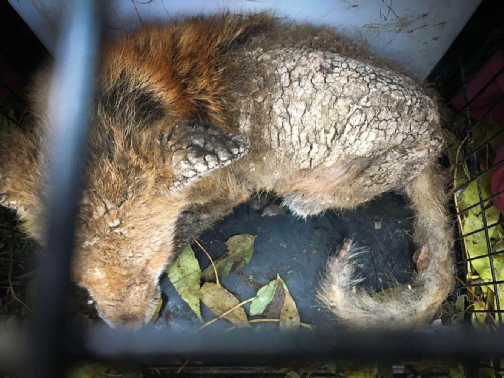 When a fox is brought into us suffering from at least 70% hair loss no conventional mange treatment is given until the fox is stabilised. We believe that a fox given Ivermectin when suffering badly with mange will actually be more likely to die than be cured. If one imagines for one moment how many mites must be feeding off the fox and how much toxins each individual mite has in its body we can then assume that an injection that is likely to kill all mites will possibly overload the foxes body with toxins that it just can not cope with. Furthermore if the fox is dehydrated, and this is often the case with foxes with mange, conventional medicine can kill.
When a fox is brought into us suffering from at least 70% hair loss no conventional mange treatment is given until the fox is stabilised. We believe that a fox given Ivermectin when suffering badly with mange will actually be more likely to die than be cured. If one imagines for one moment how many mites must be feeding off the fox and how much toxins each individual mite has in its body we can then assume that an injection that is likely to kill all mites will possibly overload the foxes body with toxins that it just can not cope with. Furthermore if the fox is dehydrated, and this is often the case with foxes with mange, conventional medicine can kill.
Mange Info 3: With dogs what we have discovered through our questionnaire is that every owner that we spoke to whose dogs are suffering from mange or have had it in the past all feed a dry food diet / and or their dog originally had a skin problem prior to mange infestation. Backing up our theory, if only in a small way, that diet plays an important role in Mange mite infestation.
The reason as to why the mange mite is virtually undetected in domestic dogs by vets may stem from the fact that many dog owners keep their pets immaculately groomed and what we have learned is that when the skin pockets are opened the female mite dies although the after effects of toxins from fecal remains and the toxins within the mites body will still cause severe irritation and in many cases secondary infection this may explain why skin scrapings in dogs very rarely show a mange mite problem.
Many on finding nothing from the skin scraping then give the dog a steroid injection and possibly antibiotics. The owner goes away, their dog apparently itch free, that is until the steroid injection wears off. Furthermore this steroid injection gives the mange mites a boost, so once the injection does wear off the mites are now stronger!!! Even where dogs have been properly diagnosed with Sarcoptic mange often the shampoo given to treat this problem causes more problems than it cures. Bearing in mind the instructions on the shampoo often inform dog owners to wear gloves when applying, to apply outside, not to get on the skin and not to flush down the sink when finished. All very well until you consider this is what is being placed on the dogs skin and left. If it works, all this will do is kill the mite, but not improve the skin condition. Hence the next time the dog comes into contact with the mite the dog gets the same condition.
Sarcoptic Mange / Canine Mange Index
Free Mange Treatment, Sarcoptic Mange, Mange Treatment Advice,Canine Mange, Fox Mange, Bald fox, Scratching fox, Poorly Fox, Injured fox, sick fox




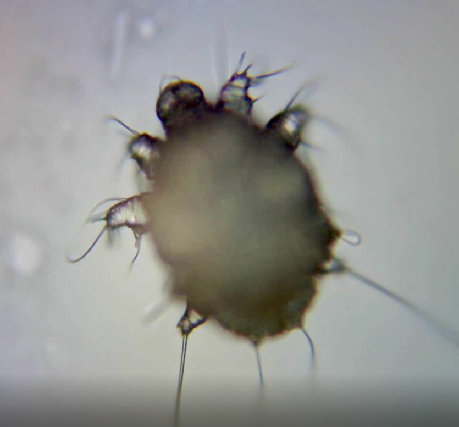 Mange Info 1: The mite that causes the terrible condition that we see in foxes, along with many other animals is the mite known as Sarcoptes Scabiei, the mite belongs to the family Sarcoptidae. The life cycle of the mite is usually between 17 -
Mange Info 1: The mite that causes the terrible condition that we see in foxes, along with many other animals is the mite known as Sarcoptes Scabiei, the mite belongs to the family Sarcoptidae. The life cycle of the mite is usually between 17 -
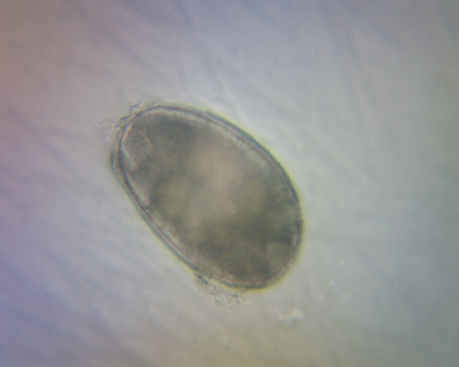 The mite’s activity causes the skin to react and this intense pruritus causes the animal to bite and scratch constantly, self inflicting open wounds and secondary bacterial infection often follows. All the scratching and biting opens the burrow and once the female mite is exposed she dies. The eggs and faecal debris left behind continue to cause pruritus which in turn causes more self mutilation, more females to die, more pruritus, more self mutilation etc etc.
The mite’s activity causes the skin to react and this intense pruritus causes the animal to bite and scratch constantly, self inflicting open wounds and secondary bacterial infection often follows. All the scratching and biting opens the burrow and once the female mite is exposed she dies. The eggs and faecal debris left behind continue to cause pruritus which in turn causes more self mutilation, more females to die, more pruritus, more self mutilation etc etc.
This intense irritation is often made worse by heat. A fox suffering from mange will often act abnormally. It’s fear for humans often appears lost. It will walk around almost aimlessly during daylight hours constantly biting and scratching at the irritation. Always on the move and unable to rest for long periods, many of the affected foxes will be dehydrated, often observed drinking for a duration of minutes as opposed to seconds. In most cases the mange starts at the rear end and the great majority of foxes will have one leg off the ground, due mainly to the self inflicted open wounds causing apparent soreness to the back end.
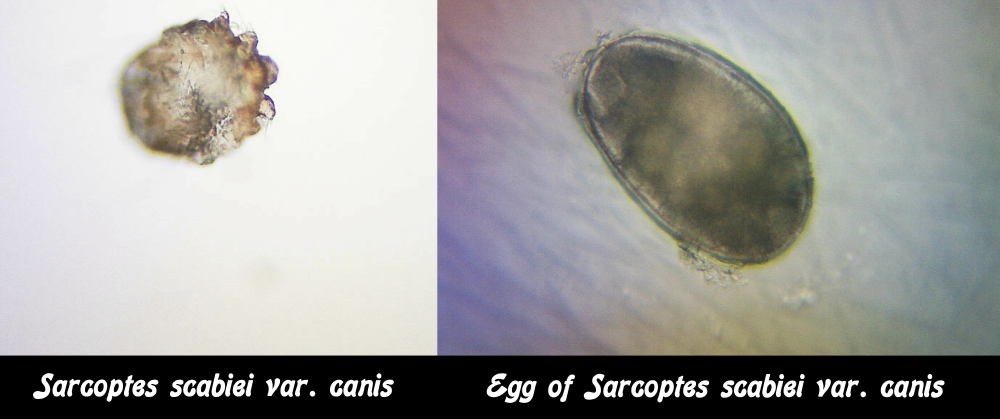

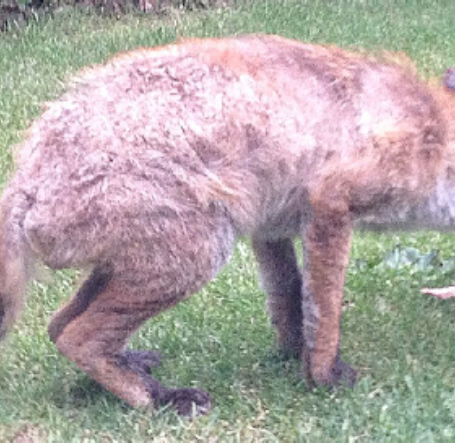
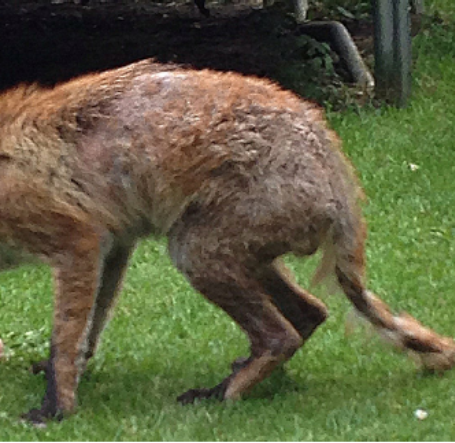
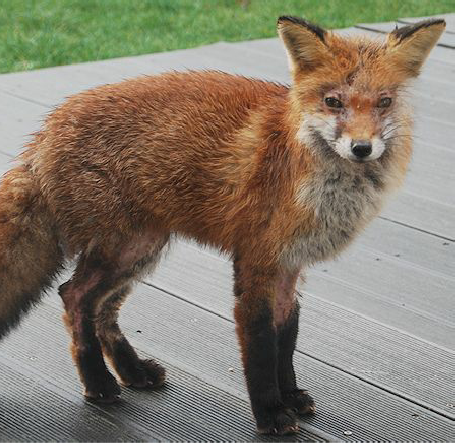
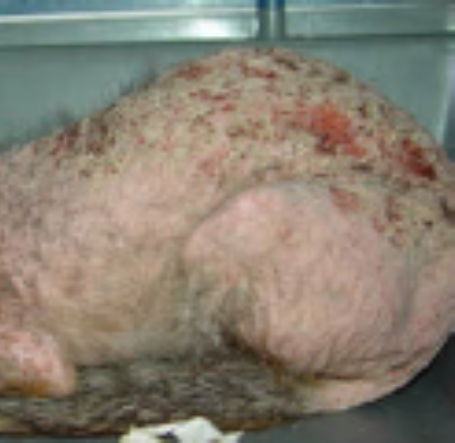
A fox with mange may adopt a hunched up appearance as the soreness at the back end of the fox becomes unbearable. In most cases the mange will start on the tail and work it’s way up the body. A fox with mange will be observed to be scratching constantly and may come out during daylight hours when you wouldn’t expect to see a fox. Often a fox with mange will also have a leg off the ground due to the soreness caused by self mutilation, the leg off the ground is more often than not, one of the back legs.
Whilst Sarcoptic Mange will often start on the tail or bottom of the fox, it can start anywhere on the body. Often a fox with mange will use its teeth to try to itch the irritation and this then enables the mite to move from tail to face. Conjunctivitis is quite common alongside Sarcoptic Mange.
As the mites spread up the body, the itching becomes worse and the fox will be scratching constantly. Open wounds become infected and this all compromises the foxes immune system. Fleas and ticks will often be present and a very poorly fox will be observed drinking copious amounts of water